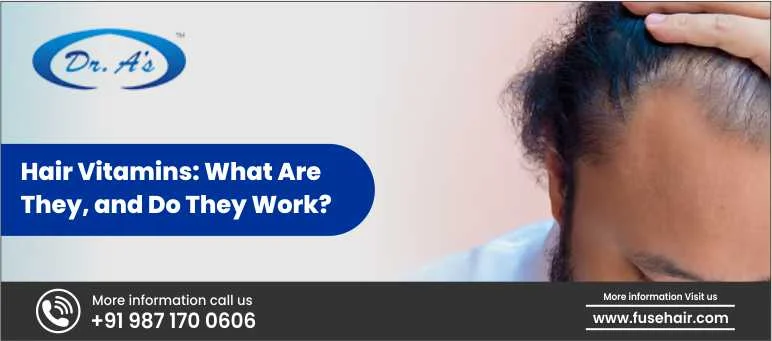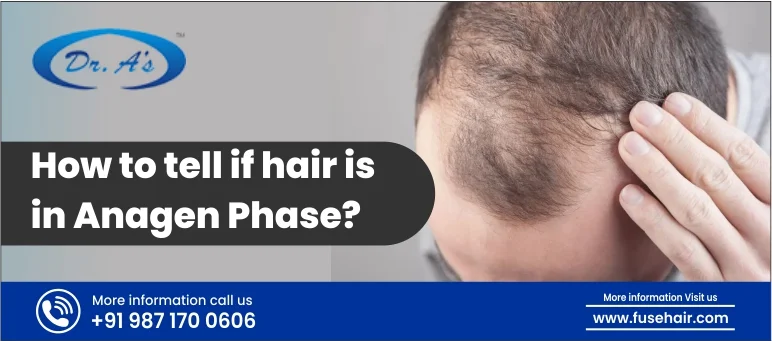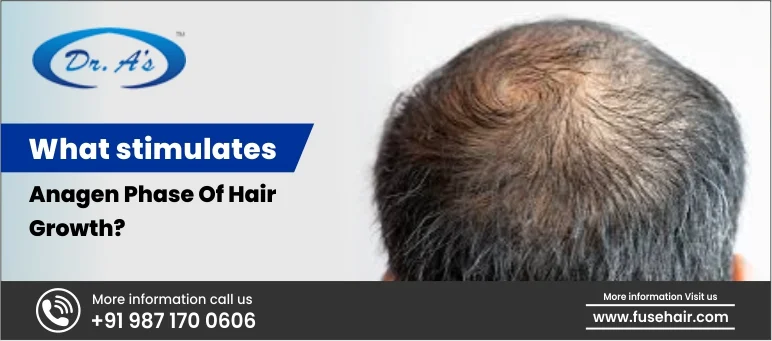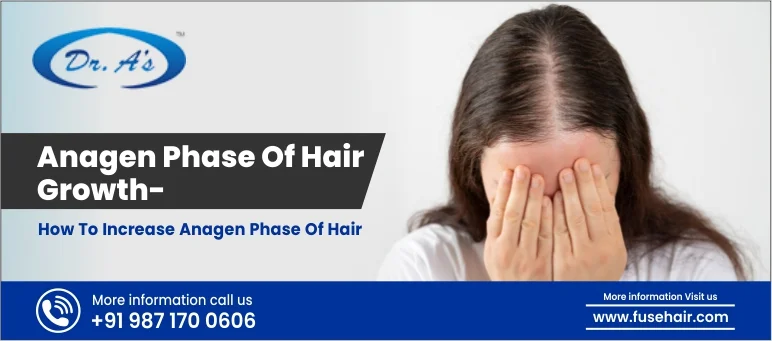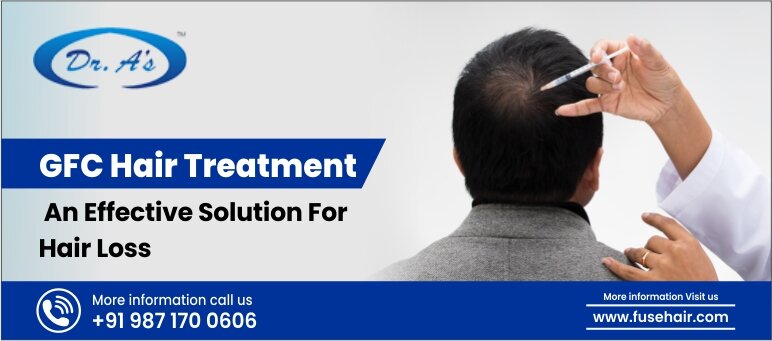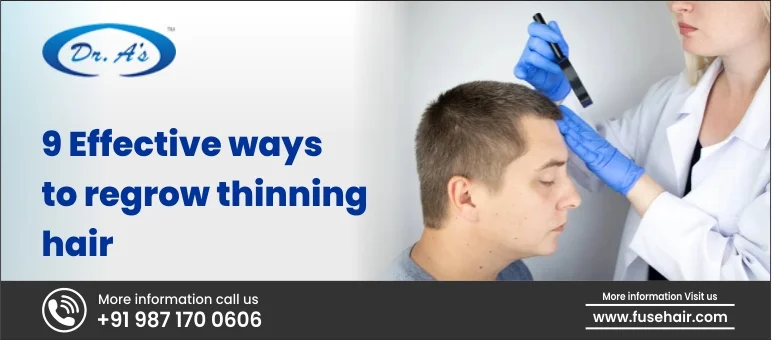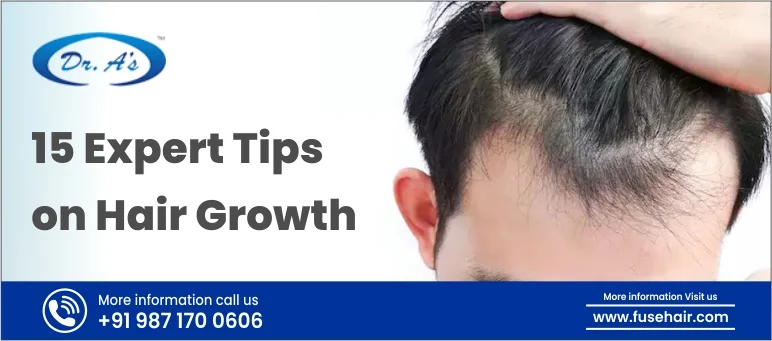
Having strong and thick hair is not only at times dependent on genetics but also the efforts and care you put behind it. However, hair loss can take a toll on people’s self-worth and confidence, as having good hair is often prized in the Indian context. Some people who suffer from excessive hair loss need to understand how a typical hair cycle works. So first, let us look at the hair growth phases and the different factors related to it, the medical treatments that may work, and how to protect hair from damage.
To help protect your hair and grow new hair, you can visit Dr A’s Clinic, where you will be guided through extensive yet effective treatment plans that will be particularly suited to your concerns. From conducting tests and determining the root cause of your hair damage to working out the best way for you, your scalp will regain a new life so that you can flaunt your regrown hair.
Hair Growth Phases and Factors Affecting It
Now, the essential part is that there are typically four hair growth phases for each individual. They are primarily the anagen phase, catagen phase, telogen phase, and exogen phase. Each phase has its typical duration, and each hair strand runs through this course, completing a full lifetime. So now let us look at the four hair growth phases and the factors affecting it:
-
Anagen Phase
The first phase of the hair follicle is also called the active phase of hair growth. This phase lasts between two to seven years. However, it can be influenced by various factors. Here are they:
- Genetics: It is quite true that genetics play a big role in affecting the anagen phase. Hence, some individuals naturally have longer hair growth cycles.
- Hormonal Changes: Hormones like androgens can affect hair growth. For example, higher androgen levels may shorten the anagen phase. That is why some people experience thinner hair.
- Age: As people age, the anagen phase can shorten. Therefore, hair may become thinner. Also, growth may slow down.
- Nutrition: Adequate protein and vitamins are essential for hair growth. A lack of nutrients can hinder the anagen phase.
- Stress: High stress levels can negatively impact the hair growth cycle. Stress might lead to a shorter anagen phase.
- Medical Conditions: Conditions like hypothyroidism or hyperthyroidism affect hair growth. These conditions can alter the duration of the anagen phase.
- Medications: Certain medications can affect hair growth. For instance, chemotherapy drugs often shorten the anagen phase.
If you visit Dr A’s Clinic, you will know how much each of these factors is taken into consideration while revising a hair growth plan for you. They are attentive to each and every factor and your needs. The name behind it, Dr Arvind Poswal, has made all of this possible to take the clinic to new heights. His vision and approach have made it possible for hair care and growth to be seen as a transformative experience.
-
Catagen Phase
The catagen phase is a transitional phase. This lasts for about two to three weeks. During this time, hair growth stops. The hair follicle also shrinks. The factors affecting this phase are listed below:
- Genetics: Genetic predisposition determines the timing of the catagen phase. This means some people may naturally have longer or shorter catagen phases.
- Age: As with the anagen phase, aging can influence the catagen phase. Hair follicles may enter this phase more quickly as one age.
- Hormonal Changes: Hormonal imbalances can trigger the catagen phase prematurely. This is why many individuals experience increased hair shedding.
- Nutritional Deficiency: Lack of essential nutrients can hasten the catagen phase. Therefore, eating a balanced diet should be considered of primary importance.
- Stress: Such conditions can affect the duration of this phase. Prolonged stress may lead to a quicker transition from anagen to catagen.
-
Telogen Phase
The telogen phase is the resting phase. It lasts for about three months, during which the hair does not grow but remains attached to the follicle. Below, we have listed the factors affecting the telogen phase:
- Genetics: The length of the telogen phase is largely determined by genetics. Hence, it can vary among individuals.
- Hormonal Changes: Hormonal fluctuations, such as those during pregnancy or menopause, can alter the telogen phase duration. This can lead to increased hair shedding.
- Medical Conditions: Conditions like alopecia areata can extend the telogen phase. This results in hair thinning.
- Medications: Some medications, like antidepressants, can prolong the telogen phase. Therefore, hair may appear less dense.
- Physical or Emotional Shock: Traumatic events can push hair follicles into the telogen phase prematurely. This condition, known as telogen effluvium, leads to significant hair loss.
-
Exogen Phase
The exogen phase is the shedding phase, where old hair falls out. This phase allows new hair to grow in its place. It is a normal part of the hair growth cycle. Here are the different criteria and factors that affect it:
- Genetics: Genetic factors influence how quickly hair sheds during the exogen phase. This means shedding rates can vary widely among individuals.
- Hormonal Changes: Hormonal imbalances can affect hair shedding. For example, postpartum women often experience increased shedding.
- Nutritional Status: Poor nutrition can again lead to increased shedding during the exogen phase. Hence, you need to focus on a balanced diet for healthy hair.
- Stress: Stress, as already known, can accelerate hair shedding. That is why high stress levels often lead to an increase in hair loss which is quite noticeable.
- Health Conditions: Certain illnesses, like thyroid disorders, can affect the exogen phase. This can result in excessive hair shedding.
- Medications: Drugs such as anticoagulants and retinoids can influence the exogen phase. Therefore, medication side effects should be considered in hair shedding patterns.
- Hair Care Practices: The last thing is the overuse of styling products and harsh hair treatments. This can increase shedding quite a lot. Rather, practice gentle hair care routines to reduce hair loss.
Medical Treatments That Work in Each Hair Growth Phase
Now although each phase plays its part according to its characteristics, some medical treatments are aimed at improving hair growth in each of these phases. Let us have a look at these treatment plans.
-
Medical Treatments for the Anagen Phase
- Minoxidil: Minoxidil can prolong the anagen phase. It is applied topically to the scalp. Hence, it helps in stimulating hair follicles.
- Finasteride: This is known to reduce DHT levels. Therefore, it helps in maintaining a longer anagen phase and in hair loss prevention.
- Platelet-Rich Plasma (PRP) Therapy: PRP involves injecting concentrated platelets into the scalp. This promotes hair growth. It does so by enhancing the anagen phase.
- Nutritional Supplements: Vitamins and minerals like biotin, zinc, and iron support hair growth. These nutrients ensure the anagen phase is sustained.
- Laser Therapy: As already proven by scientists, Low-level laser therapy can stimulate hair follicles. Hence, it prolongs the anagen phase.
Laser therapy and PRP therapy are both available at Dr A’s Clinic for hair growth treatment. They also use a range of topical products apart from minoxidil to help people regrow hair. Having a consultation session with the doctors there would be a good way to get started for anyone combating hair fall issues.
-
Medical Treatments for the Catagen Phase
- Anti-androgens: Anti-androgen medications can prevent premature entry into the catagen phase. This is effective for those with hormonal imbalances.
- Stress Management: Therapies like yoga and meditation can reduce stress. Therefore, they help in delaying the catagen phase transition.
- Nutritional Support: Balanced nutrition prevents premature catagen entry. Supplements might be prescribed to address deficiencies.
- Topical Treatments: Certain treatments containing topical products can support hair follicles. These plans in hair treatment for damaged hair help maintain the catagen phase duration.
-
Medical Treatments for the Telogen Phase
- Corticosteroids: Conditions like alopecia areata can be treated with corticosteroids. Hence, they reduce the duration of the telogen phase.
- Minoxidil: The Telogen phase has been studied to be shortened with the application of minoxidil. It stimulates follicles to re-enter the anagen phase more quickly.
- Hormone Therapy: Hormonal fluctuations can be balanced with this kind of therapy. This proves beneficial for reducing telogen phase duration. It is a good hair breakage treatment plan.
- Scalp Massage: To increase blood flow, you should practice regular scalp massages. Therefore, they can help follicles exit the telogen phase sooner.
-
Medical Treatments for the Exogen Phase
- Minoxidil: This topical product is loved for reducing excessive shedding. Hence, it stabilizes the exogen phase.
- Balanced Diet: A diet rich in essential nutrients supports overall hair health. Therefore, it reduces excessive shedding and is a proven hair repair treatment way.
- Stress Reduction: Managing stress levels can minimize hair shedding. Techniques like mindfulness and exercise prove effective.
- Medical Evaluation: Regular check-ups for underlying health issues are crucial. Treating these issues can normalize the exogen phase.
- Hair Care Practices: Gentle hair care practices should be adopted. Avoiding harsh treatments reduces shedding.
Steps to protect Hair from damage
So now let us look at some steps and approaches that you can inculcate and follow to always protect your hair from any kind of damage:
-
Always Wear A Broad Rimmed Hat
The first step to how to protect hair from damage is to wear a hat. While going out, make sure you put that hat on. As much as we apply sunscreen on our skin to protect it from UV rays, we often forget about our hair. However, the truth is that our hair is also affected and damaged by UV rays on a similar level. So wear a hat to cover your head, thereby shielding your hair from the harsh UV A and UV B rays.
-
Focus on a Doctor-Approved Diet
Nutrition is a key part of every hair care routine and hair repair treatment. However, the important thing to remember is that a generalized diet plan may not work for all. So, the first step is to visit a doctor, find out why you are facing hair loss, and then customize a nutrition plan accordingly. For example, many face hair loss due to low levels of iron, while some face it due to low levels of protein or zinc. So the diet plan should be customized accordingly to help in hair loss prevention.
At Dr A’s Clinic, you won’t be just given a generalized treatment plan. The plan would be individually suited for you. This would also take into consideration your dietary measures and approach that you need to follow while combating hair loss.
-
Keep your Hair Gently Pleated
It is a bad idea to keep your hair open as it may lead to tangles and frizziness. This can damage the sensitive hair shafts. So a good approach would be to keep your hair in pleats, which should be neither too tight nor too loose. This will help keep your hair in good condition. You should also practice this while going to sleep.
-
Never Sleep on Wet Hair
Many make the critical mistake of taking a shower before bed and then going to sleep with wet hair. While this can lead to bronchitis, it is also extremely damaging to your hair follicles. While wet, hair shafts are in the weakest condition, and by going straight to bed, you aren’t giving them a chance to get dried properly. To add another tip, always use a silk cover on your pillow while resting your head. This will prevent any friction and protect the hair shafts from damage. It will also work for hair breakage treatment.
-
Maintain a Proper Hair Care Routine
This may not sound like a proper tip, but it goes a long way to help protect your hair from damage. All you need to do is follow a simple routine every day. Also, you have to be consistent with it. This includes brushing your gently with a wooden and clean comb twice or thrice a day. Secondly, massage your hair with gentle strokes. Thirdly, oil your hair once or twice a week and then use a sulfate-free shampoo after that to clean it away. Always follow it with a conditioner and a hair serum if needed. These are essential steps in hair treatment for damaged hair. Lastly, if you are using any heat-styling tools, make sure you use a protective serum.
Conclusion
So that was all about hair growth phases and the factors affecting it, like stress, nutrition etc. As we have discussed, treatments like minoxidil or laser therapy may be customised for each phase. However, irrespective of that, follow the steps mentioned to protect your hair from any kind of hair damage. This includes wearing hats, gently pleating your hair, following a hair care routine, etc.
As we have mentioned at the beginning of this article, the best step forward for a comprehensive treatment plan would be to visit Dr A’s Clinic. They also have other ranges of treatments as well, like beard restoration, crown design, eyebrow restoration, etc. Moreover, their unique treatment plans for hair growth, such as FUE or FUT, have become very popular and are loved by all of their customers. You should definitely consider having a consultation session with the experts and doctors at Dr A’s Clinic to take your next step forward.

